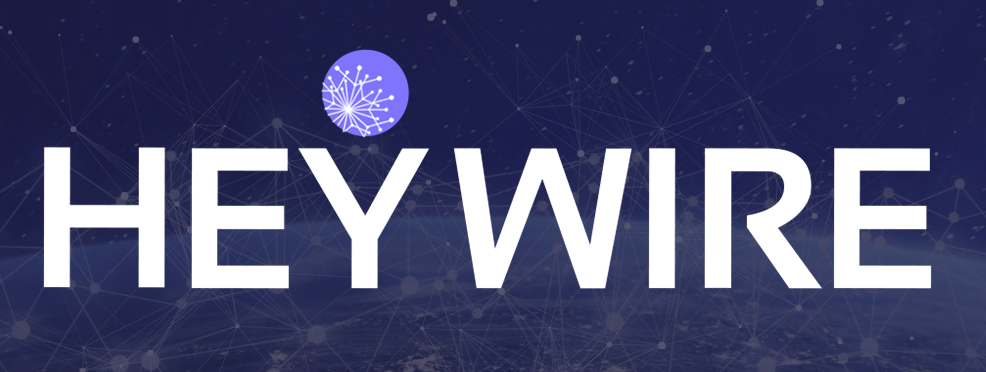In the ever-evolving landscape of journalism, a groundbreaking product called HeyWire is poised to redefine the way news is produced and consumed.
Wells, an innovative AI-powered program used by HeyWire, has emerged as the industry’s first fully autonomous, self-prompting perpetual AI journalist. Its unique capabilities have sparked interest and excitement among journalism companies and publications, opening new possibilities for efficient news gathering and content creation.
So, how exactly does a service like HeyWire work? For those unfamiliar with this technology, Wells operates on a set of predefined parameters and criteria, constantly scouring the internet in real time, 24 hours every day. It uses these parameters to identify and curate important and newsworthy stories.
The program goes beyond mere identification; in fact, it comprehends the stories it discovers and seeks out multiple sources to corroborate the facts. This involves cross-referencing various credible news outlets such as The Washington Post, CNN, The New York Times and The Wall Street Journal. By analyzing sources such as these, Wells ensures the accuracy and verifiability of the reported information.
Once the information has been validated, Wells proceeds to craft its own version of the story, integrating the facts it has gathered. This process ensures that the content produced is original and devoid of plagiarism, as HeyWire has incorporated a robust plagiarism filter to maintain the highest standards of journalistic integrity. The final output is then submitted to non-AI editors for publication.
“Say we want it (HeyWire) to cover national politics, and we ask it to develop a story about the presidential elections. To do that, it quickly scrapes the internet and looks for those credible sources. It then grabs one and looks where else the topic has been covered so that it can get the facts from them and see if those same facts in each article corroborate,” explains Von Raees, who is the founder of HeyWire AI.
The interest in HeyWire has been met with enthusiasm from journalism companies and publications alike. The product has engaged in discussions with publishers and news organizations ranging from small community news outlets to major brands. This positive response has underscored the potential impact of this AI-driven tool on the journalism industry.
As HeyWire continues to develop further, funding for the project has become a priority. The initiative originated from the company’s own publishing needs, and thus, has been self-funded until this point. However, HeyWire is currently in the midst of a fundraising campaign, aiming to raise $750,000 to finalize the product and prepare for its market launch by early next year. The interest from potential investors has been substantial, matching the level of enthusiasm displayed by journalism companies.
“We’ve had multiple conversations with publishers and news organizations, and the reaction is pretty uniform in that they are all very interested and excited about the prospect of using this tool. We’re currently looking for beta partners to test the product, and we’re building a list of pre-sales of organizations that are getting on a list for early access,” says Raees.
One of the key strengths of HeyWire is its versatility across different types of journalism companies. From small community newspapers with a limited staff to major media outlets like The New York Times and The Washington Post, the product offers a solution to the common challenge of resource allocation. For smaller organizations, HeyWire has the chance to free up limited editorial staff by automating the repetitive task of re-reporting existing news, allowing journalists to focus on original reporting and investigative journalism. The benefits extend to larger organizations as well, enabling them to maximize the efficiency of their resources and redirect their reporters toward more high-value journalistic endeavors.
“We feel that this product is a fit all the way from the small local newspaper, all the way up to multinational enterprises. The goal is the same for all of those organizations, which is to free up resources so they can cover and do original news reporting,” says Raees. “So it really is a fit across the board. The job is the same, the challenges are the same. It’s just on different scales.”
Concerns about AI technologies replacing human jobs have, of course, lingered for years, and the developers of HeyWire, including Raees, acknowledge these apprehensions. However, the primary goal of the product is not to replace journalists, but rather to empower them.
The traditional business model for news organizations has faced numerous challenges, resulting in widespread layoffs and financial instability. By utilizing HeyWire, journalism companies can augment their capabilities, generate a greater volume of content and monetize it effectively. This, in turn, allows journalists to focus on original reporting and investigative journalism, which is valued in nearly every newsroom across the country much higher than re-reporting existing information.
“It’s very important to emphasize that our goal with creating this, first and foremost, is to empower journalism and provide knowledge and information for masses and bring light to the areas where there needs to be light, which happens with more intricate reporting,” said Raees. “HeyWire is our way of empowering the field. Period.”
Looking ahead, the potential for HeyWire is boundless. The current functionality of the program, which focuses on rewriting and reporting existing stories, is just the beginning. The service is hoping to expand into being able to report on live events — particularly when dealing with local government — and there is also an avenue for HeyWire to explore creating video content.
A product such as this is proving one thing: that AI is firmly on its way to influencing the world of reporting. It will be up to people within the field to use it to their advantage; because if they don’t, they’ll likely be left behind.
“AI is not going away. It’s far too powerful for it not to be used. It’s like trying to rewind the internet or refusing to use cars anymore,” believes Raees. “Technology always comes, and when it has a utility, it does not go away. So you either take it, mold it, shape it and use that responsibility to your advantage, or you become irrelevant.”
To check out HeyWire’s early access page, head to https://heywire.ai/#access.







